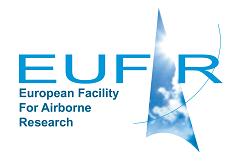Project

MICWA: Mid-level Inversions and Cloudiness in southern West Africa
Abstract
Climate models underestimate mid-level cloudiness with important ramifications for the radiation budget, especially in tropical latitudes. In the area of the West African monsoon the frequency and amount of such clouds is substantial, especially at night. Part of the reason of the nighttime maximum is that mid-level clouds are extensively generated in the stratiform part of Mesoscale Convective Systems (MCSs) whose activity peaks at night in the region. Other potential genesis mechanisms of altostratus are weak synoptic lifting (e.g. by lower tropospheric vortices) in a nearly saturated mid troposphere, a situation that most frequently occurs at the peak of the monsoon season in July-August near the Guinea Coast, or mid-level detrainment from developing cumulus congestus and cumulonimbus clouds. The latter two genesis mechanisms are aided by a mid-level (500-600 hPa) inversion or at least stable layer that is often visible in radiosonde ascents in the Guineo-Sahelian zone (5-12°N). To the best of the applicants’ knowledge, the causes of this inversion have not been explored yet. Since at northern Sahelian latitudes, the mixed layer at the end of the day reaches altitudes of about 5km, the stable layer atop this mixed layer may simply be advected southward by the mid-level return flow. However, an elevated melting-layer inversion, as often present during the DYNAMO experiment over the Indian Ocean (R. Johnson, personal communication), or mid-level subsidence, forced by deep convection to the north, are alternative, but not necessarily independent, possible explanations.
In spite of its potential impact on regional climate, there exist no comprehensive in-situ observational dataset of mid-level cloud environments to date. The MICWA project aims at filling this gap. The experimental work here will be developed within the EU funded DACCIWA (Dynamics-Aerosol-Chemistry-Cloud Interactions in West Africa) project. The EUFAR TA MICWA project is concentrated on dynamic and
thermodynamic genesis and analysis processes of mid-level cloud decks, a scientific topic not in the focus of DACCIWA. Rather, DACCIWAs focus is on aerosol-chemistry interaction with low, warm clouds. The DACCIWA field campaign is planned for June/July 2015 and will involve three research aircraft. The aircraft detachment base will be selected among one of three coastal cities (Accra, Loma or Cotonou).
The objective of the EUFAR project Mid-level Inversions and Cloudiness in southern West Africa (MICWA) is to collect a dataset, against which the above-mentioned theories and DACCIWA model simulations can be tested. For example, the presence of dust aerosols would indicate a provenance of the stable layer from the Sahel. High-resolution structural properties of the mid-level clouds, vertical profiles of temperature, humidity, wind, momentum and turbulent heat fluxes, and radiation measurements shall help to shed light on mechanisms that disintegrate or maintain stratus decks
Details
| Keywords: | EUFAR, MICWA, Africa, clouds |
|---|---|
| Previously used record identifiers: |
No related previous identifiers.
|
